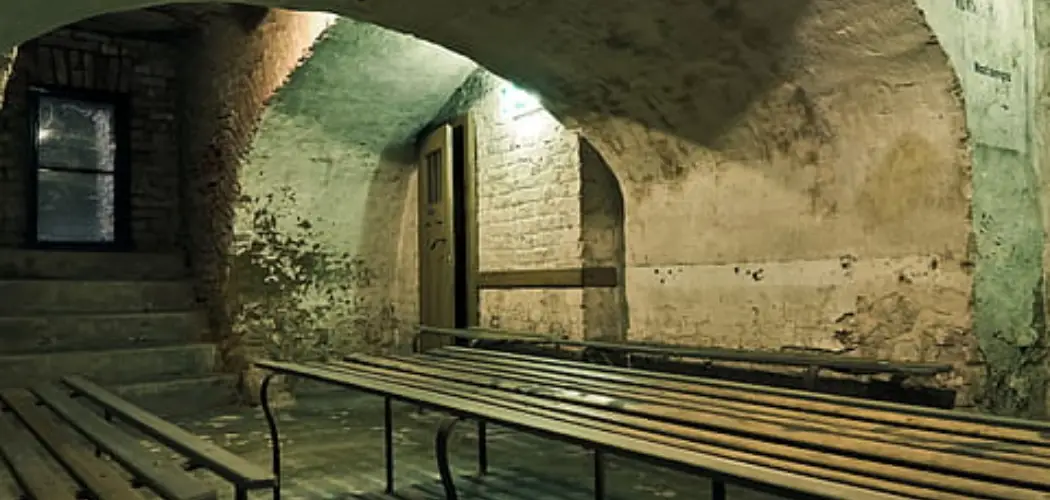There are numerous reasons why you should make a basement fallout shelter. Firstly, the basement is usually well protected from outside dangers and will provide a haven to protect against natural disasters, nuclear attacks, or any other environmental crisis.
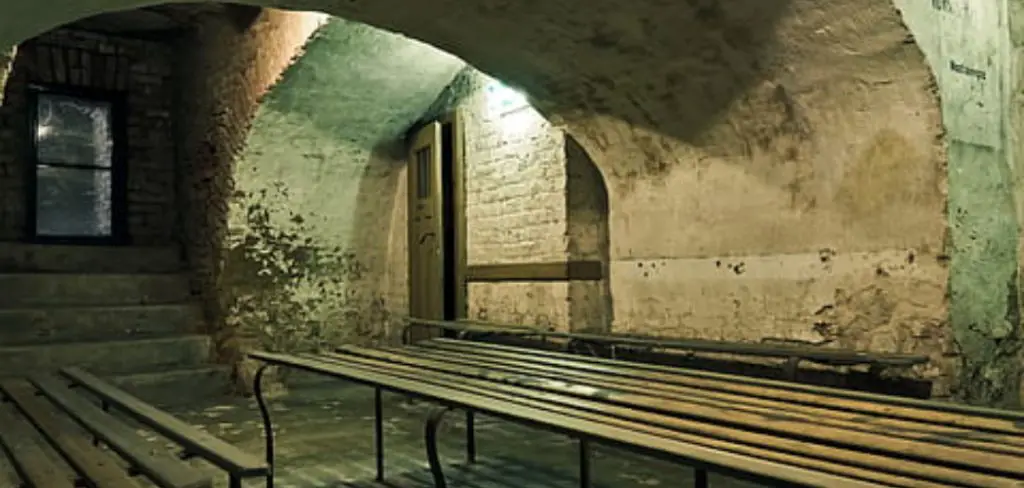
The primary advantage of a basement fallout shelter is that it provides an isolated, secure area in which people can remain safe and calm during a nuclear attack or other emergency. Basements are also typically well insulated against sound and temperature, making it possible to maintain comfortable living conditions even during extreme weather. In this blog post, You will learn how to make your basement a fallout shelter.
Materials You Will Need
- Concrete
- Steel beams
- Drywall
- Plywood
- Nails and screws
- Air vents
- Plastic sheeting
- Generators or solar panels for power
- Water filtration systems
- A first-aid kit
Building your basement fallout shelter can be daunting, but it is possible with the right materials and some planning.
Steps for Making Your Basement a Fallout Shelter
Step 1: Inspect the Basement
Before you start any project, it is important to inspect the area that you are working with. This will help you determine what materials and tools you need to do the job effectively and safely.
Step 2: Create a Solid Foundation
You will need to reinforce your basement walls with concrete and steel beams. This will ensure that your shelter can withstand the pressures of a nuclear attack. Once you have reinforced your walls, it is time to install drywall and plywood to the basement’s interior. This will create an effective barrier against radiation and fallout particles.
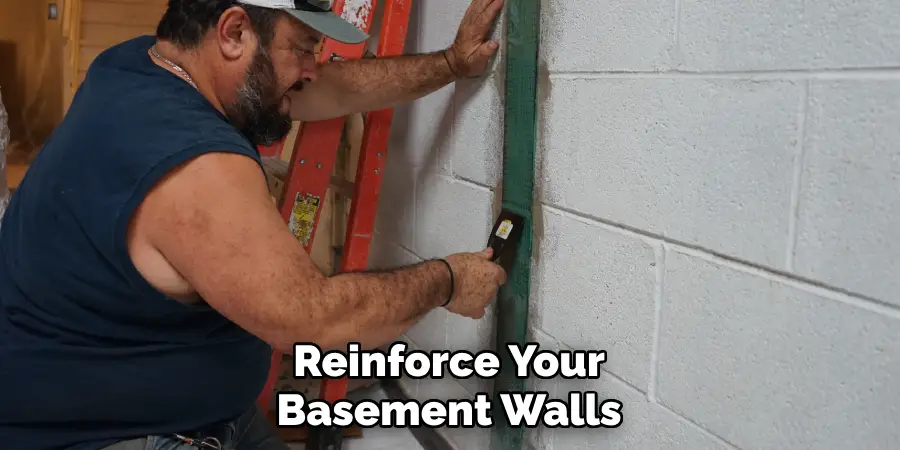
Step 3: Add Air Vents
Adding air vents is an important step in constructing your basement fallout shelter. This will ensure that proper ventilation and airflow are maintained throughout the space. Installing plastic sheeting to the interior walls is beneficial as it helps prevent any outside contaminants from entering your shelter.
Step 4: Install Power Sources
Installing generators or solar panels is a great way to ensure that your shelter has power and you will have access to lighting and other necessities. Water filtration systems are essential, as they help purify any contaminated water entering your shelter. This will ensure that the water is safe for consumption.
Step 5: Stock Your Shelter with Necessities
Stocking your shelter with basic necessities such as food, water, first aid kits, and other supplies is important in prepping for any disaster. Ensuring you have enough of these items to last throughout the disaster is important.
Step 6: Make Sure You Have a Communication Plan
Having proper communication with family and friends is essential in any emergency. Planning and having an effective communication system before any disaster strikes is important. It is important to ensure your family is prepared for any emergency. Make sure to have drills and discuss safety procedures with each family member.
Following these steps will help ensure you are ready for a nuclear attack or any other disaster. By planning ahead, you can create a safe space where you and your family can stay safe in the event of a disaster.
Tips for How to Make Your Basement a Fallout Shelter
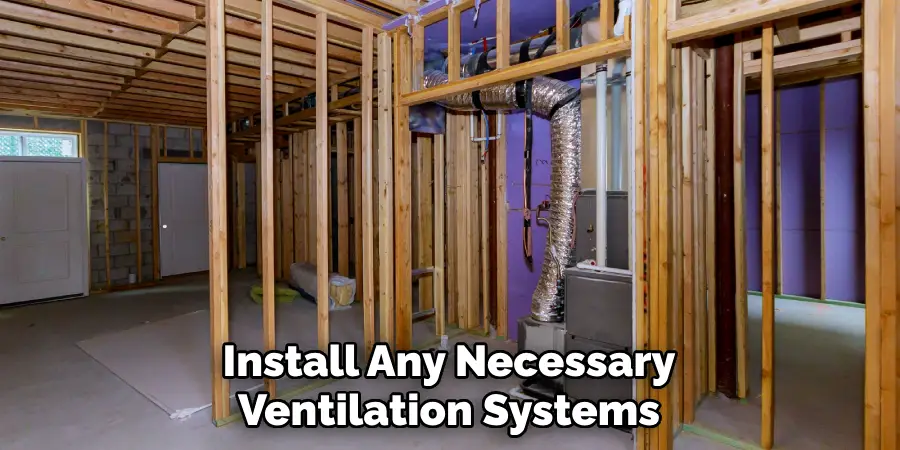
- Start by creating a secure basement area free from external elements such as rain, dust, and vermin. This will ensure that the shelter can provide proper protection from fallout radiation.
- Ensure you install heavy-duty doors and window guards to protect against windblown debris or radioactive particles entering the shelter.
- Install any necessary ventilation systems to maintain air quality in the shelter.
- Have a stockpile of food, water, and medical supplies (e.g., antibiotics, antiseptic ointments) suitable for long-term use in an emergency.
- Ensure you have all the necessary communication tools, such as radios and phones, to keep up-to-date with the latest news and information.
- Install a battery backup system to power any necessary electronic equipment, lights, or devices that may be needed while sheltering in place.
- Conduct regular drills so everyone knows the procedures to follow during an emergency. This includes how best to enter and exit the fallout shelter, as well as protocols for responding in an emergency.
When using your basement as a fallout shelter, always stay alert and prepared for any situation. Always have plans in place for both short-term and long-term survival in the event of an emergency.
How Do You Keep the Shelter Secure From Outside Threats?
Having a secure shelter means knowing that your family and belongings are safe, no matter what happens outside. That’s why it’s important to make sure the entrance to your fallout shelter is as secure as possible. The entrance should be well-protected with a sturdy lock that only you can open and marked signs so others know not to enter.
It’s also important to ensure that your shelter’s walls and roof are properly insulated to keep out radiation from outside. Additionally, it’s a good idea to store additional supplies such as food, water, medical kits, and other emergency items in case you need them. By following these safety precautions, you can ensure that your basement shelter is a secure and safe place for you and your family.
Are There Any Steps You Should Take to Ensure the Shelter is Safe From Radiation?
Radiation is dangerous, and ensuring your shelter is safe from contamination is important. Some steps to protect yourself include purchasing a radiation detector, checking the level of radiation in the air outside, and keeping any radioactive materials away from your shelter.
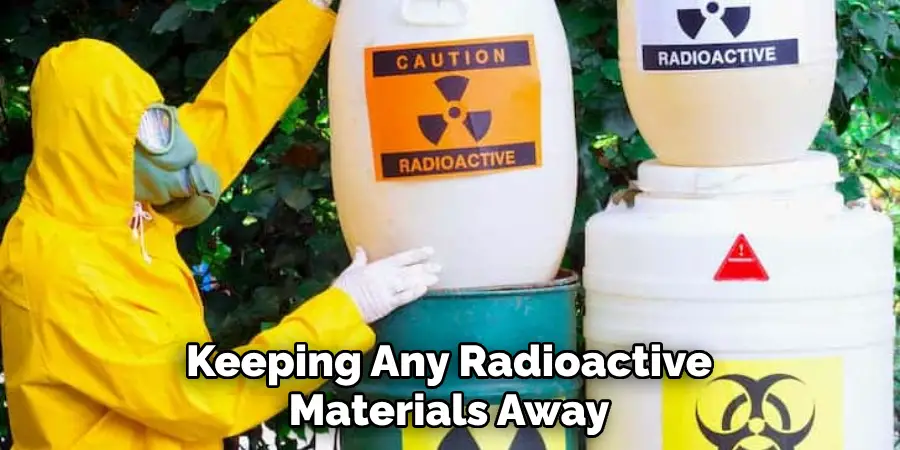
You should also consult experts on how best to construct your shelter to be as resistant to radiation as possible. You should also be prepared to evacuate your shelter if necessary, in an emergency, or if you are exposed to radiation. Above all else, it is important to remember that safety always comes first, and a well-prepared shelter can help protect you and your loved ones from danger.
What Kind of Backup Power Source Should You Use for the Fallout Shelter?
When constructing a fallout shelter, it is important to consider the type of power source you should use. One option would be an electrical generator, which can provide backup power in case of a power outage due to a natural disaster or other emergency. Additionally, an alternative energy source such as solar panels or wind turbines can provide additional protection if your fallout shelter is located in an area prone to flooding or earthquakes.
When choosing a power source for your fallout shelter, it is important to consider the overall budget available. Generators require fuel and regular maintenance to keep running, while solar panels and wind turbines are significantly more expensive upfront but will cost less over time. Additionally, government incentives for using renewable energy sources such as solar or wind may exist.
How Do You Set Up a Communication System in Case You Need to Reach Out for Help?
Having a secure communication system is an essential part of any fallout shelter. Whether you choose to have a direct communication line with your family or friends on the outside or just a simple two-way radio set-up will depend on the size and sophistication of your shelter. Either way, having a reliable way to reach out for help can be life-saving if an emergency does occur.
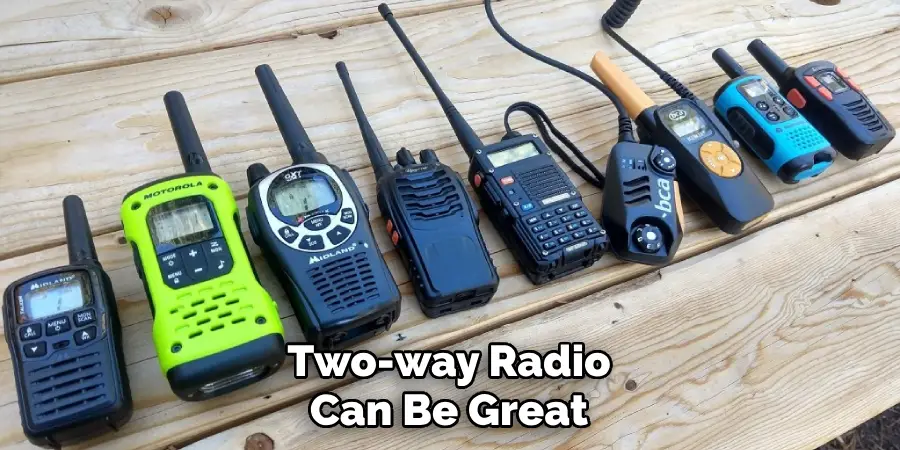
A two-way radio can be great for short-range communication within your local neighborhood or between the shelter and the outside world. It’s also quite simple to set up as all that is required is a base station (where you will place the antenna) and one or more handheld radios. Choose a reliable brand and test the range of your two-way radio set-up to ensure you have sufficient coverage.
Conclusion
A basement fallout shelter can be a great way to protect your family in a nuclear disaster, but there are some important drawbacks to consider before making this decision. The most obvious disadvantage is cost–building and equipping a basement fallout shelter can be expensive.
In conclusion, creating a fallout shelter in your basement is a great way to stay safe during an emergency. Taking the time to prepare and plan for this project properly will ensure you have a secure place to go when needed. Research local regulations, gather the right supplies and materials, and take safety precautions before building your basement fallout shelter. Reading this post has helped you learn how to make your basement a fallout shelter. Make sure the safety precautions are carried out in the order listed.

